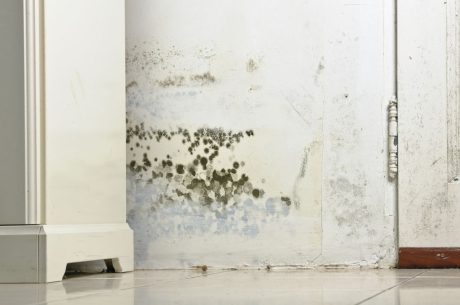How to Prevent Mold in Attic
The attic, often a neglected area of the house, holds significant importance in maintaining a healthy indoor environment. Beyond being a storage space for forgotten belongings, the attic plays a crucial role in regulating temperature and moisture levels throughout the home. Unfortunately, it’s also a prime breeding ground for mold if left unchecked. Mold growth not only damages the structural integrity of your property but also poses severe health risks to inhabitants.
Preventing mold in attic spaces requires a proactive approach that addresses moisture control, ventilation, and regular maintenance. By implementing a few key strategies, you can safeguard your attic from mold infestation and ensure a healthier living environment for you and your family.
In this guide, we’ll explore practical steps to keep mold at bay in your attic space. From identifying common causes of moisture buildup to implementing effective ventilation systems, we’ll cover everything you need to know to prevent mold growth and maintain a clean, healthy attic.
How to Prevent Mold in Attic Spaces
Preventing mold in attic spaces requires a proactive approach focused on controlling moisture levels, improving ventilation, and conducting regular maintenance. Here are some effective strategies to prevent mold growth in your attic:

1. Identify and Fix Leaks:
Inspect the attic regularly for signs of water intrusion, such as stains or damp spots on ceilings, walls, or insulation. Repair any leaks in the roof, flashing, or plumbing promptly to prevent moisture buildup.
2. Improve Ventilation:
Proper ventilation is essential for regulating humidity levels in the attic. Ensure adequate airflow by installing ridge vents, soffit vents, or gable vents to promote air circulation and prevent condensation. Consider adding attic fans to enhance ventilation, especially in areas with high humidity or inadequate airflow.
3. Maintain Proper Insulation:
Proper insulation helps regulate temperature and reduce the risk of condensation in the attic. Ensure insulation is installed correctly and evenly throughout the attic space, paying special attention to areas prone to air leaks or thermal bridging. Seal gaps and cracks around fixtures, pipes, and vents to prevent warm, moist air from entering the attic.
4. Control Indoor Humidity:
Keep indoor humidity levels in check to prevent excess moisture from infiltrating the attic. Use exhaust fans in bathrooms, kitchens, and laundry rooms to vent moisture outside. Consider using a dehumidifier in areas with high humidity levels to maintain optimal indoor conditions.
5. Monitor Attic Moisture Levels:
Use a hygrometer or moisture meter to monitor humidity levels in the attic regularly. Keep humidity levels below 60% to discourage mold growth. If humidity levels are consistently high, take steps to address the underlying cause, such as improving ventilation or reducing indoor moisture sources.
6. Promote Air Circulation:
Avoid blocking vents or obstructing airflow in the attic with stored items or insulation. Keep attic access doors or hatches open periodically to allow air circulation. Use wire racks or shelves to elevate stored items off the floor and promote airflow underneath.
7. Inspect and Maintain Roofing:
Regularly inspect the roof for damaged or missing shingles, deteriorated flashing, and clogged gutters. Keep gutters and downspouts clear of debris to ensure proper drainage and prevent water from backing up onto the roof.
8. Address Mold Promptly:
If you notice any signs of mold growth in the attic, such as musty odors or visible mold patches, take immediate action to remediate the problem. Hire a professional mold remediation specialist to safely and thoroughly remove mold and prevent recurrence.
Is mold in attic harmful?
Mold in the attic can indeed be harmful. Mold releases spores into the air, which can trigger allergic reactions and respiratory issues in susceptible individuals. Some types of mold produce mycotoxins, which can pose serious health risks if inhaled or ingested over time. Prolonged exposure to mold in the attic can exacerbate allergies, asthma, and other respiratory conditions. Additionally, mold can compromise the structural integrity of the attic and spread to other areas of the home if left untreated.
Can mold in an attic be fixed?
Yes, mold in the attic can be fixed, but it requires a comprehensive approach. The first step is identifying and addressing the underlying cause of the mold growth, such as leaks, poor ventilation, or excessive humidity. Once the root cause is resoved, remediation techniques can be employed to remove the mold safely and effectively. This may involve cleaning contaminated surfaces, replacing damaged materials, and implementing preventive measures to prevent future mold growth. It’s crucial to enlist the help of professionals experienced in mold remediation to ensure thorough and proper treatment.
Does attic mold affect indoor air quality?
Yes, attic mold can significantly affect indoor air quality. As mold spores are released into the air, they can circulate throughout the home, leading to contamination of indoor air. Breathing in mold spores can trigger allergic reactions, asthma attacks, and other respiratory issues, particularly in individuals with sensitivities or compromised immune systems. Moreover, some molds produce mycotoxins, which can further compromise indoor air quality and pose health risks. Addressing attic mold is essential not only for structural integrity but also for maintaining a healthy indoor environment.
Signs of mold in attic:
- Visible mold growth on surfaces such as wood, insulation, or drywall.
- Musty or earthy odor emanating from the attic.
- Water stains or discoloration on attic surfaces, indicating leaks or moisture intrusion.
- Warped or deteriorating materials, which may be a result of prolonged moisture exposure.
- Allergic reactions or respiratory symptoms experienced by occupants when spending time in or near the attic.
Summary:
Preventing mold in attic spaces is crucial for maintaining a healthy indoor environment and preserving the structural integrity of your home. By addressing moisture control, improving ventilation, and conducting regular maintenance, you can effectively mitigate the risk of mold growth in your attic.
Key strategies include identifying and fixing leaks, improving ventilation with proper airflow and insulation, controlling indoor humidity levels, monitoring attic moisture levels, promoting air circulation, inspecting and maintaining roofing, and addressing mold promptly if it occurs. By following these preventive measures, you can ensure a clean, healthy attic space and minimize the risk of mold-related issues.



